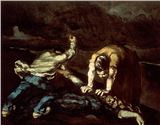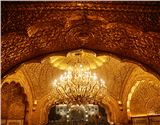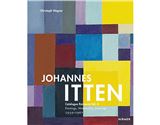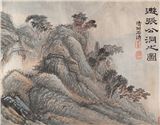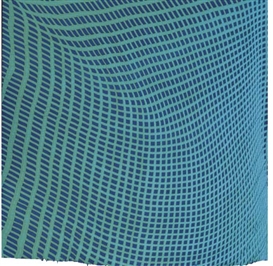ALEXIS HARDING
ALEXIS HARDING ANDREW MUMMERY GALLERY Baudelaire, as everyone knows, advised the critic to adopt "an exclusive point of view" but with the proviso:
Barry Schwabsky / ARTFORUM
Jan 01, 2004

Baudelaire, as everyone knows, advised the critic to adopt "an exclusive point of view" but with the proviso: "provided the one adopted opens up the widest horizons." Today, when a chic eclecticism seems seductive to so many painters, one wants to issue them a similar warning: Let your technique be as narrow as the eye of a needle-as long as a realm wide as heaven awaits on the other side. (Of course, you`ll never be sure until you`ve passed through it.) One model could be Alexis Harding, who`s been achieving divergent effects of great specificity through a single method he`s used since the mid-`90s. A grid of enamel gloss is applied to a monochrome field of wet oil paint; the chemical incompatibility between the two results in a puckering and warping of the surface, and the artist helps this process of distortion along by pushing and pulling at the paint during its long drying time and, above all, by encouraging the effects of gravity to allow the paint to slide around, and sometimes even off, the support, from which it can hang like rags (if the painting`s hung fresh enough, some of it can even be found puddled on the floor below). The titles of previous paintings give a pretty clear idea of the results: Slump Fear, 2001; Ruinart, 2001; Collision, 2001; Collapsed Painting, 2002. Harding`s is a punk formalism in the tradition of Steven Parrino and Angela de la Cruz, but with the difference that the decline and fall of the painting happens within it, so to speak, rather than to it.
Harding`s most recent paintings and drawings (along with the one sculpture included here) suggest, however, that he might be wondering whether his chosen technique, with its exacerbated tension between accident and design, is still able to generate significant variation or whether it`s become a restrictive formula. A few paintings betray a certain anxiety that the process itself may not be providing sufficient emotional weight-notably those such as Cross (orange/black), 2003, or Breeding Lilac (wet diptych), 2003, in which the artist has constructed a further level of patterning by abutting similarly done panels. (Curiously, the paintings in which a single plane has been internally divided-I am thinking of Fourfold, 2002, and Quartet [Golden], 2003-are stronger.) Yet most often Harding`s mastery of his process still allows for a palpable sense of discovery, and the paintings` elegance-underlined by their typically crisp, exuberant color-does not foreclose identification with the emotional or psychological overtones that their built-in metaphors of breakdown and disruption inevitably generate. These paintings can be slapstick or melodrama, but at their best-for instance, Nine Lines, 2003, or Painting (B) red oil/orange gloss, 2003-they inhabit an enigmatic zone somewhere in between.
The drawings and sculpture show Harding in an exploratory mood, looking at ways to mess around with grids without sticking to his patented system-in Postage Drawing I, 2003, he does this with the adhesive surrounds left over when you`ve used the stamps they frame-and ways to use the system besides messing up the grids. These projects suggest he`s likely to have another good trick up his sleeve by the time he needs it.
-Barry Schwabsky
COPYRIGHT: Copyright Artforum Inc. Jan 2004. Provided by Proquest- CSA, LLC. All Rights Reserved. Only fair use as provided by the United States copyright law is permitted.
PROQUEST-CSA, LLC- MAKES NO WARRANTY REGARDING THE ACCURACY, COMPLETENESS, OR TIMELINESS OF THE LICENSED MATERIALS OR ANY WARRANTY, EXPRESS OR IMPLIED.


